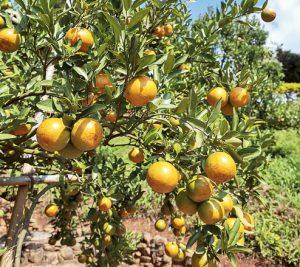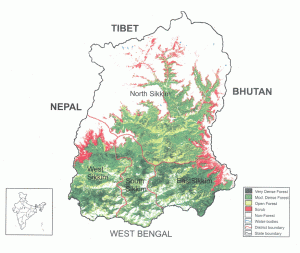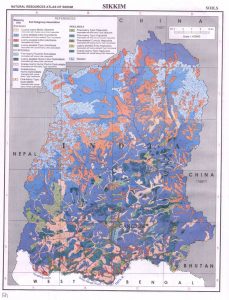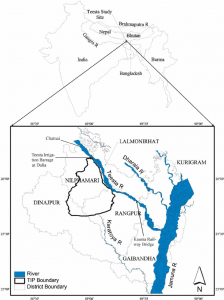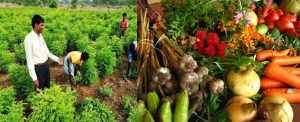Sikkim : Planned Development
State government has given large attention to the planned development of State so as to improve the socio economic indicators of the State. Urbanization is a part of the development process and rural-urban migration is largely common in developing economies and it is common for the state of Sikkim. During these processes, existing urban facilities like housing, sanitation, transportation, safe drinking water supply, and health are generally under stress. Therefore, in the case of towns like Gangtok, Namchi, Gyalshing, Mangan and other notified bazaars, Government is working to develop sufficient support facilities and are already transforming each urban center as models of excellence.
models of excellence.
Sikkim government has laid emphasis on the planned development of the state. Overall strategy to induce positive development in the state has been laid. It has been laid at for levels :-
State as a whole
Four Districts
Urban Growth centers
Basic Urban Settlements
A well planned strategy has been adopted to envision the “Urban” Sikkim of the future. The State Government has also adopted a Concept Note on Micro Cities, a granular intervention in the development of Rural Marketing Centers and Class III Bazars. All bazars will be eco friendly and smart bazars. It is unizue programme for the development of state and government has provided huge investments for the programme.
The Strategic Urban Plan for the State documents the guidelines for the planning of towns and bazaars across the State with due room to keep their unique strengths, weaknesses, opportunities and threats as part of the planning process.
One city of Sikkim i.e. Namchi has been selected among the 100 shortlisted cities to be developed under the Smart Cities Mission of the Government of India. With overall development, Namchi can be made a world class city.
Gangtok which is the capital of the State with a population of a little over one lakh, is already implementing schemes under the Atal Mission for Rejuvenation and Urban Transformation(AMRUT) to improve basic services. Gangtok has also been shortlisted to participate in the Smart City programme and is a probable addition to the Smart City list.
State Government has decided to introduce the Smart City concept to construct underground malls and markets in these towns to create larger spaces for urban business hubs. Under the Smart City concept, Government want to develop the cities into a vibrant and connected city of opportunities.
Central Plans in Development of the State
Ministry of Development of North Eastern Region (DoNER) launched North East Rural Livelihood Project (NERLP) that would create 0.3 million jobs in Mizoram, Nagaland, Sikkim and Tripura. The US$ 115.1 million project would be implemented during the 12th Five Year Plan and is financed by the World Bank. It would be implemented in 14 blocks of Sikkim. The project is expected to be completed by 2018
Up gradation and modernization of raw water trunk mains and water treatment plant for Greater Gangtok has been taken up. 80% of work completed Under the Jawaharlal Nehru National Urban Renewal Mission (JNNURM)has been completed. The rehabilitation of sewerage systems of Gangtok is being undertaken at a cost of US$ 5.3 million. Water treatment and distribution system up gradation are also being undertaken at a cost of US$ 15.74 million.
To extend financial support to the state government and to provide water
supply facilities in towns having population less than 20,000, the centrally sponsored Accelerated Urban Water Supply Programme (AUWSP) was launched that has been merged with Urban Infrastructure Development Scheme for Small and Medium Towns (UIDSSMT). Under this, US$ 8.7 million has been allocated for development of water supply systems and sewerage in Mangan, Namchi, Jorethang, Melli and Rangpo.The Sikkim Water Security & Public Health Engineering Department (WS & PHED) provides water supply to Gangtok, six major notified towns, 41 other urban towns and 92 notified rural marketing centers. Gangtok has a requirement of 30 million litres per day and the WS & PHED has a storage and distribution capacity of 45.5 million litres. During 2015-16, the major functions such as solid waste, car/bazaar parking contract, sanitation, trade license, etc. were relocated to urban local bodies. Moreover, during 2016-17, the state government is targeting development of residential colonies to minimize uncontrollable migration across the state.
The state government is laying emphasis on providing Wi-Fi services across various major towns of the state, during 2016-17. In addition, other mobile technologies such as online payments, inner line permit tracking system, m-Tourism, etc. would also be provided in the state during the same period. Moreover, during 2016-17, an announcement was made by the Chief Minister that under “Micro-Cities” concept, development work on 39 small bazaars would be undertaken in a phased manner, during 2016-17. The total budget allocation for urban development during 2016-17, is estimated to be US$ 15.77 million. In addition, US$ 5.82 million and US$ 5.27 million would be allocated for the development of water supply & sanitation as well as housing sector, respectively.
Smart City Mission
Smart Cities Mission focus on the most pressing needs and the greatest opportunities to improve lives of the people. They tap a range of approaches – digital and information technologies, urban planning best practices, public-private partnerships, and policy change – to make a difference. They always put people first.
The objective is to promote cities that provide core infrastructure and give a decent quality of life to its citizens, a clean and sustainable environment and application of ‘Smart’ Solutions. The focus is on sustainable and inclusive development and the idea is to look at compact areas, create a replicable model which will act like a light house to other aspiring cities. The Smart Cities Mission is meant to set examples that can be replicated both within and outside the Smart City, catalyzing the creation of similar Smart Cities in various regions and parts of the country.
The Smart City Mission is an urban renewal programme initiated by the central government in June 2015. The main aim of the program is to improve infrastructure and to create sustainable and citizen friendly urban cities. A smart city is defined as a city which is highly developed in terms of infrastructure and communications. At its launch in 2015, the central government had identified 100 towns across India to be under this programme.
The central government has announced plans to develop Gangtok, Pelling, and Yuksam cities as smart cities as in coming years.
The central government announced plans to develop Namchi as one of
the 98 smart cities in India.Atal Mission for Rejuvenation and Urban Transformation (AMRUT)
It emanates from the vision of the Government articulated in the address of the President of India. The objective of the Mission is for providing basic services like water supply, sewerage, urban transport etc to household and build amenities in cities which will improve the quality of life for all, especially the poor and the disadvantaged is a national priority.
As per the state budget 2016-17, work on service level improvement plan under AMRUT is expected to be submitted to the Central Ministry during 2016-17.
Gangtok which is the capital of the State with a population of a little over one lakh, is already implementing schemes under the Atal Mission for Rejuvenation and Urban Transformation(AMRUT) to improve basic services.

